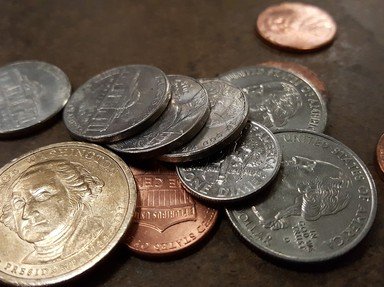Quiz Answer Key and Fun Facts
1. The first official coins of the United States were minted under the authority of the Coinage Act of 1792. This law established the dollar as the standard unit of American currency; the dollar was further divided into 100 cents and and 1000 milles. What coin was the smallest denomination ever issued by the United States mint?
2. The United States also decided to issue gold coins. The standard gold coin was a piece valued at $10. What was it called?
3. In 1849, following the discovery of gold in California, the Treasury Department suddenly found itself in possession of large quantities of gold. It was decided to issue two new denominations of gold coins. What were they?
4. In 1851, the mint introduced a new silver coin. It was called a "trime," and was worth how much?
5. In 1854, the mint decided to produce yet another gold coin, one that was again to prove of limited usefulness. What was the denomination this time?
6. The outbreak of the Civil War caused another round of coin hoarding, and coins of all denominations virtually disappeared from circulation, even the lowly one-cent coins. Since coins were not available to pay for small purchases, what took their place?
7. The Civil War and its aftermath had a lot of repercussions for United States coinage. A nickel three-cent piece was introduced in 1865, and a nickel five-cent piece was first minted in 1866; this would eventually replace the silver half dime. Prior to these developments, however, a new denomination was introduced in 1864 in an attempt to ease the shortage of small change. What was it?
8. In 1873, in order to placate silver interests and facilitate trade with the Far East, Congress authorized the production of a coin to compete with the Mexican peso in foreign markets. What were these coins called?
9. One of the least successful United States coins was a silver piece that lasted only a few years. Minted for circulation only in 1875 and 1876, it was easily mistaken for a quarter (25 cents), and was so unpopular with the public that production was halted after only two years, and large quantities were melted down. What was this short-lived denomination?
10. In 1892 the United States began issuing commemorative coins, the first being a set of two coins issued in connection with Chicago's Columbian Exposition in 1892 and 1893. In 1915, the mint produced five coins to honor San Francisco's Panama-Pacific International Exposition. What was unusual about one of the gold coins?
Source: Author
daver852
This quiz was reviewed by FunTrivia editor
WesleyCrusher before going online.
Any errors found in FunTrivia content are routinely corrected through our feedback system.
